Deeplab的复现(pytorch实现)
DeepLab复现的pytorch实现
本文复现的主要是deeplabv3。使用的数据集和之前发的文章FCN一样,没有了解的可以移步到之前发的文章中去查看一下。
1.该模型的主要结构
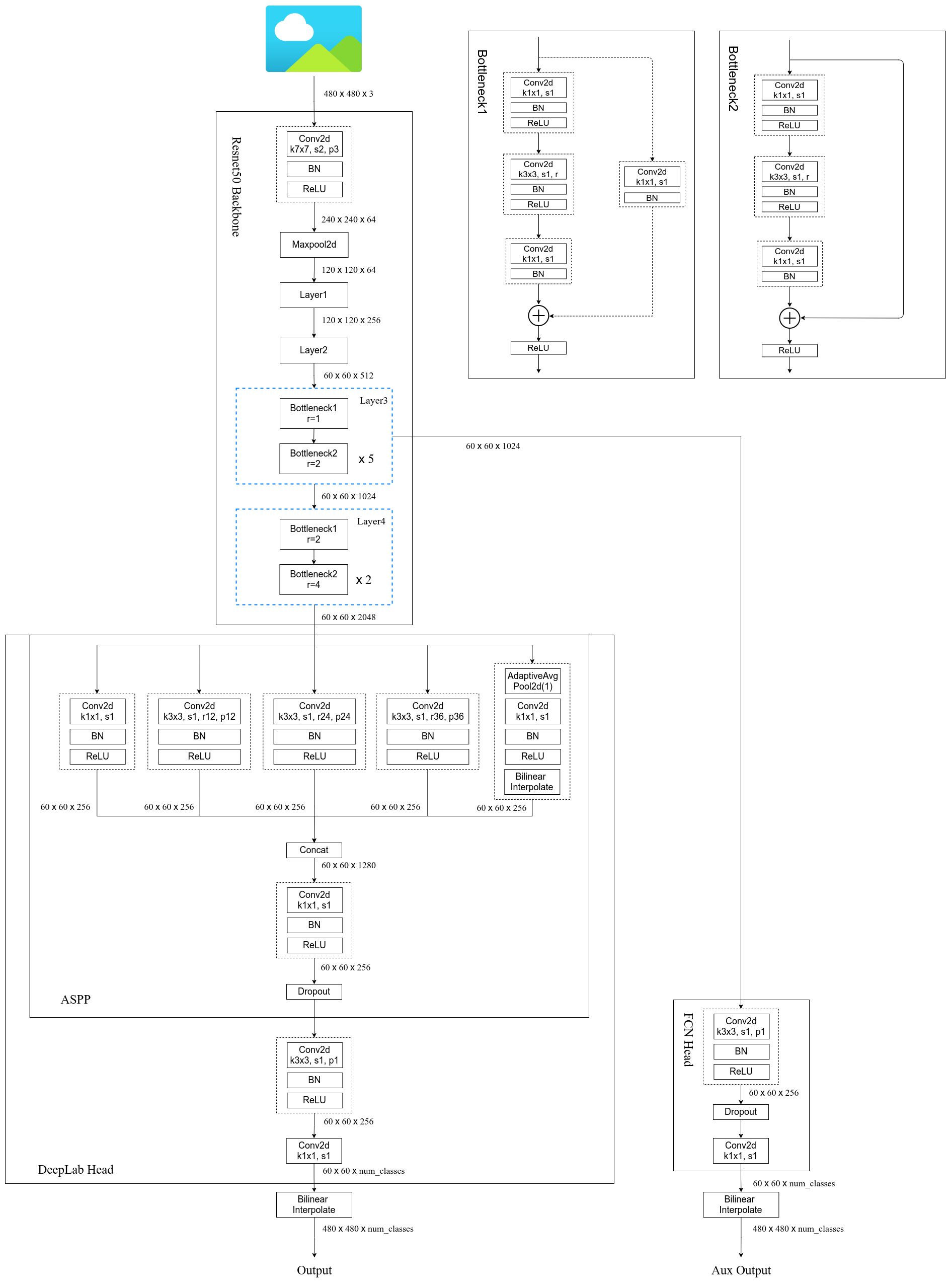
对于代码部分,主要只写了模型部分的,其他部分内容基本和FCN的一致,在下面也会给出完整代码仓库的地址方便大家进行学习。
from collections import OrderedDictfrom typing import Dict, Listimport torch
from torch import nn, Tensor
from torch.nn import functional as F
from .resnet_backbone import resnet50, resnet101
from .mobilenet_backbone import mobilenet_v3_largeclass IntermediateLayerGetter(nn.ModuleDict): # 获取模型指定的中间层输出"""Module wrapper that returns intermediate layers from a modelIt has a strong assumption that the modules have been registeredinto the model in the same order as they are used.This means that one should **not** reuse the same nn.Moduletwice in the forward if you want this to work.Additionally, it is only able to query submodules that are directlyassigned to the model. So if `model` is passed, `model.feature1` canbe returned, but not `model.feature1.layer2`.Args:model (nn.Module): model on which we will extract the featuresreturn_layers (Dict[name, new_name]): a dict containing the namesof the modules for which the activations will be returned asthe key of the dict, and the value of the dict is the nameof the returned activation (which the user can specify)."""_version = 2__annotations__ = {"return_layers": Dict[str, str],}def __init__(self, model: nn.Module, return_layers: Dict[str, str]) -> None:if not set(return_layers).issubset([name for name, _ in model.named_children()]):raise ValueError("return_layers are not present in model")orig_return_layers = return_layersreturn_layers = {str(k): str(v) for k, v in return_layers.items()}# 重新构建backbone,将没有使用到的模块全部删掉layers = OrderedDict()for name, module in model.named_children():layers[name] = moduleif name in return_layers:del return_layers[name]if not return_layers:breaksuper(IntermediateLayerGetter, self).__init__(layers)self.return_layers = orig_return_layersdef forward(self, x: Tensor) -> Dict[str, Tensor]:out = OrderedDict()for name, module in self.items():x = module(x)if name in self.return_layers:out_name = self.return_layers[name]out[out_name] = xreturn outclass DeepLabV3(nn.Module):"""Implements DeepLabV3 model from`"Rethinking Atrous Convolution for Semantic Image Segmentation"<https://arxiv.org/abs/1706.05587>`_.Args:backbone (nn.Module): the network used to compute the features for the model.The backbone should return an OrderedDict[Tensor], with the key being"out" for the last feature map used, and "aux" if an auxiliary classifieris used.classifier (nn.Module): module that takes the "out" element returned fromthe backbone and returns a dense prediction.aux_classifier (nn.Module, optional): auxiliary classifier used during training"""__constants__ = ['aux_classifier']def __init__(self, backbone, classifier, aux_classifier=None):super(DeepLabV3, self).__init__()self.backbone = backboneself.classifier = classifierself.aux_classifier = aux_classifierdef forward(self, x: Tensor) -> Dict[str, Tensor]:input_shape = x.shape[-2:]# contract: features is a dict of tensorsfeatures = self.backbone(x)result = OrderedDict()x = features["out"]x = self.classifier(x)# 使用双线性插值还原回原图尺度x = F.interpolate(x, size=input_shape, mode='bilinear', align_corners=False)result["out"] = xif self.aux_classifier is not None:x = features["aux"]x = self.aux_classifier(x)# 使用双线性插值还原回原图尺度x = F.interpolate(x, size=input_shape, mode='bilinear', align_corners=False)result["aux"] = xreturn resultclass FCNHead(nn.Sequential):def __init__(self, in_channels, channels):inter_channels = in_channels // 4 # 两个//表示地板除,即先做除法,然后向下取整super(FCNHead, self).__init__(nn.Conv2d(in_channels, inter_channels, 3, padding=1, bias=False),nn.BatchNorm2d(inter_channels),nn.ReLU(),nn.Dropout(0.1),nn.Conv2d(inter_channels, channels, 1))class ASPPConv(nn.Sequential):def __init__(self, in_channels: int, out_channels: int, dilation: int) -> None:super(ASPPConv, self).__init__(nn.Conv2d(in_channels, out_channels, 3, padding=dilation, dilation=dilation, bias=False),nn.BatchNorm2d(out_channels),nn.ReLU())class ASPPPooling(nn.Sequential):def __init__(self, in_channels: int, out_channels: int) -> None:super(ASPPPooling, self).__init__(nn.AdaptiveAvgPool2d(1),nn.Conv2d(in_channels, out_channels, 1, bias=False),nn.BatchNorm2d(out_channels),nn.ReLU())def forward(self, x: torch.Tensor) -> torch.Tensor:size = x.shape[-2:]for mod in self:x = mod(x)return F.interpolate(x, size=size, mode='bilinear', align_corners=False)class ASPP(nn.Module):def __init__(self, in_channels: int, atrous_rates: List[int], out_channels: int = 256) -> None:super(ASPP, self).__init__()modules = [nn.Sequential(nn.Conv2d(in_channels, out_channels, 1, bias=False),nn.BatchNorm2d(out_channels),nn.ReLU())]rates = tuple(atrous_rates)for rate in rates:modules.append(ASPPConv(in_channels, out_channels, rate))modules.append(ASPPPooling(in_channels, out_channels))self.convs = nn.ModuleList(modules)self.project = nn.Sequential(nn.Conv2d(len(self.convs) * out_channels, out_channels, 1, bias=False),nn.BatchNorm2d(out_channels),nn.ReLU(),nn.Dropout(0.5))def forward(self, x: torch.Tensor) -> torch.Tensor:_res = []for conv in self.convs:_res.append(conv(x))res = torch.cat(_res, dim=1)return self.project(res)class DeepLabHead(nn.Sequential):def __init__(self, in_channels: int, num_classes: int) -> None:super(DeepLabHead, self).__init__(ASPP(in_channels, [12, 24, 36]),nn.Conv2d(256, 256, 3, padding=1, bias=False),nn.BatchNorm2d(256),nn.ReLU(),nn.Conv2d(256, num_classes, 1))def deeplabv3_resnet50(aux, num_classes=21, pretrain_backbone=False):# 'resnet50_imagenet': 'https://download.pytorch.org/models/resnet50-0676ba61.pth'# 'deeplabv3_resnet50_coco': 'https://download.pytorch.org/models/deeplabv3_resnet50_coco-cd0a2569.pth'backbone = resnet50(replace_stride_with_dilation=[False, True, True])if pretrain_backbone:# 载入resnet50 backbone预训练权重backbone.load_state_dict(torch.load("resnet50.pth", map_location='cpu'))out_inplanes = 2048aux_inplanes = 1024return_layers = {'layer4': 'out'}if aux:return_layers['layer3'] = 'aux'backbone = IntermediateLayerGetter(backbone, return_layers=return_layers)aux_classifier = None# why using aux: https://github.com/pytorch/vision/issues/4292if aux:aux_classifier = FCNHead(aux_inplanes, num_classes)classifier = DeepLabHead(out_inplanes, num_classes)model = DeepLabV3(backbone, classifier, aux_classifier)return modeldef deeplabv3_resnet101(aux, num_classes=21, pretrain_backbone=False):# 'resnet101_imagenet': 'https://download.pytorch.org/models/resnet101-63fe2227.pth'# 'deeplabv3_resnet101_coco': 'https://download.pytorch.org/models/deeplabv3_resnet101_coco-586e9e4e.pth'backbone = resnet101(replace_stride_with_dilation=[False, True, True])if pretrain_backbone:# 载入resnet101 backbone预训练权重backbone.load_state_dict(torch.load("resnet101.pth", map_location='cpu'))out_inplanes = 2048aux_inplanes = 1024return_layers = {'layer4': 'out'}if aux:return_layers['layer3'] = 'aux'backbone = IntermediateLayerGetter(backbone, return_layers=return_layers)aux_classifier = None# why using aux: https://github.com/pytorch/vision/issues/4292if aux:aux_classifier = FCNHead(aux_inplanes, num_classes)classifier = DeepLabHead(out_inplanes, num_classes)model = DeepLabV3(backbone, classifier, aux_classifier)return modeldef deeplabv3_mobilenetv3_large(aux, num_classes=21, pretrain_backbone=False):# 'mobilenetv3_large_imagenet': 'https://download.pytorch.org/models/mobilenet_v3_large-8738ca79.pth'# 'depv3_mobilenetv3_large_coco': "https://download.pytorch.org/models/deeplabv3_mobilenet_v3_large-fc3c493d.pth"backbone = mobilenet_v3_large(dilated=True)if pretrain_backbone:# 载入mobilenetv3 large backbone预训练权重backbone.load_state_dict(torch.load("mobilenet_v3_large.pth", map_location='cpu'))backbone = backbone.features# Gather the indices of blocks which are strided. These are the locations of C1, ..., Cn-1 blocks.# The first and last blocks are always included because they are the C0 (conv1) and Cn.stage_indices = [0] + [i for i, b in enumerate(backbone) if getattr(b, "is_strided", False)] + [len(backbone) - 1]out_pos = stage_indices[-1] # use C5 which has output_stride = 16out_inplanes = backbone[out_pos].out_channelsaux_pos = stage_indices[-4] # use C2 here which has output_stride = 8aux_inplanes = backbone[aux_pos].out_channelsreturn_layers = {str(out_pos): "out"}if aux:return_layers[str(aux_pos)] = "aux"backbone = IntermediateLayerGetter(backbone, return_layers=return_layers)aux_classifier = None# why using aux: https://github.com/pytorch/vision/issues/4292if aux:aux_classifier = FCNHead(aux_inplanes, num_classes)classifier = DeepLabHead(out_inplanes, num_classes)model = DeepLabV3(backbone, classifier, aux_classifier)return model----------------------------------------------------------------------------------分割线-------------------------------------------from typing import Callable, List, Optionalimport torch
from torch import nn, Tensor
from torch.nn import functional as F
from functools import partialdef _make_divisible(ch, divisor=8, min_ch=None): # 为了使每一层的通道数都可以被8整除"""This function is taken from the original tf repo.It ensures that all layers have a channel number that is divisible by 8It can be seen here:https://github.com/tensorflow/models/blob/master/research/slim/nets/mobilenet/mobilenet.py"""if min_ch is None:min_ch = divisornew_ch = max(min_ch, int(ch + divisor / 2) // divisor * divisor)# Make sure that round down does not go down by more than 10%.if new_ch < 0.9 * ch:new_ch += divisorreturn new_chclass ConvBNActivation(nn.Sequential):def __init__(self,in_planes: int,out_planes: int,kernel_size: int = 3,stride: int = 1,groups: int = 1,norm_layer: Optional[Callable[..., nn.Module]] = None,activation_layer: Optional[Callable[..., nn.Module]] = None,dilation: int = 1):padding = (kernel_size - 1) // 2 * dilationif norm_layer is None:norm_layer = nn.BatchNorm2dif activation_layer is None:activation_layer = nn.ReLU6super(ConvBNActivation, self).__init__(nn.Conv2d(in_channels=in_planes,out_channels=out_planes,kernel_size=kernel_size,stride=stride,dilation=dilation,padding=padding,groups=groups,bias=False),norm_layer(out_planes),activation_layer(inplace=True))self.out_channels = out_planesclass SqueezeExcitation(nn.Module):def __init__(self, input_c: int, squeeze_factor: int = 4):super(SqueezeExcitation, self).__init__()squeeze_c = _make_divisible(input_c // squeeze_factor, 8)self.fc1 = nn.Conv2d(input_c, squeeze_c, 1)self.fc2 = nn.Conv2d(squeeze_c, input_c, 1)def forward(self, x: Tensor) -> Tensor:scale = F.adaptive_avg_pool2d(x, output_size=(1, 1))scale = self.fc1(scale)scale = F.relu(scale, inplace=True)scale = self.fc2(scale)scale = F.hardsigmoid(scale, inplace=True)return scale * xclass InvertedResidualConfig:def __init__(self,input_c: int,kernel: int,expanded_c: int,out_c: int,use_se: bool,activation: str,stride: int,dilation: int,width_multi: float):self.input_c = self.adjust_channels(input_c, width_multi)self.kernel = kernelself.expanded_c = self.adjust_channels(expanded_c, width_multi)self.out_c = self.adjust_channels(out_c, width_multi)self.use_se = use_seself.use_hs = activation == "HS" # whether using h-swish activationself.stride = strideself.dilation = dilation@staticmethoddef adjust_channels(channels: int, width_multi: float):return _make_divisible(channels * width_multi, 8)class InvertedResidual(nn.Module):def __init__(self,cnf: InvertedResidualConfig,norm_layer: Callable[..., nn.Module]):super(InvertedResidual, self).__init__()if cnf.stride not in [1, 2]:raise ValueError("illegal stride value.")self.use_res_connect = (cnf.stride == 1 and cnf.input_c == cnf.out_c)layers: List[nn.Module] = []activation_layer = nn.Hardswish if cnf.use_hs else nn.ReLU# expandif cnf.expanded_c != cnf.input_c:layers.append(ConvBNActivation(cnf.input_c,cnf.expanded_c,kernel_size=1,norm_layer=norm_layer,activation_layer=activation_layer))# depthwisestride = 1 if cnf.dilation > 1 else cnf.stridelayers.append(ConvBNActivation(cnf.expanded_c,cnf.expanded_c,kernel_size=cnf.kernel,stride=stride,dilation=cnf.dilation,groups=cnf.expanded_c,norm_layer=norm_layer,activation_layer=activation_layer))if cnf.use_se:layers.append(SqueezeExcitation(cnf.expanded_c))# projectlayers.append(ConvBNActivation(cnf.expanded_c,cnf.out_c,kernel_size=1,norm_layer=norm_layer,activation_layer=nn.Identity))self.block = nn.Sequential(*layers)self.out_channels = cnf.out_cself.is_strided = cnf.stride > 1def forward(self, x: Tensor) -> Tensor:result = self.block(x)if self.use_res_connect:result += xreturn resultclass MobileNetV3(nn.Module):def __init__(self,inverted_residual_setting: List[InvertedResidualConfig],last_channel: int,num_classes: int = 1000,block: Optional[Callable[..., nn.Module]] = None,norm_layer: Optional[Callable[..., nn.Module]] = None):super(MobileNetV3, self).__init__()if not inverted_residual_setting:raise ValueError("The inverted_residual_setting should not be empty.")elif not (isinstance(inverted_residual_setting, List) andall([isinstance(s, InvertedResidualConfig) for s in inverted_residual_setting])):raise TypeError("The inverted_residual_setting should be List[InvertedResidualConfig]")if block is None:block = InvertedResidualif norm_layer is None:norm_layer = partial(nn.BatchNorm2d, eps=0.001, momentum=0.01)layers: List[nn.Module] = []# building first layerfirstconv_output_c = inverted_residual_setting[0].input_clayers.append(ConvBNActivation(3,firstconv_output_c,kernel_size=3,stride=2,norm_layer=norm_layer,activation_layer=nn.Hardswish))# building inverted residual blocksfor cnf in inverted_residual_setting:layers.append(block(cnf, norm_layer))# building last several layerslastconv_input_c = inverted_residual_setting[-1].out_clastconv_output_c = 6 * lastconv_input_clayers.append(ConvBNActivation(lastconv_input_c,lastconv_output_c,kernel_size=1,norm_layer=norm_layer,activation_layer=nn.Hardswish))self.features = nn.Sequential(*layers)self.avgpool = nn.AdaptiveAvgPool2d(1)self.classifier = nn.Sequential(nn.Linear(lastconv_output_c, last_channel),nn.Hardswish(inplace=True),nn.Dropout(p=0.2, inplace=True),nn.Linear(last_channel, num_classes))# initial weightsfor m in self.modules():if isinstance(m, nn.Conv2d):nn.init.kaiming_normal_(m.weight, mode="fan_out")if m.bias is not None:nn.init.zeros_(m.bias)elif isinstance(m, (nn.BatchNorm2d, nn.GroupNorm)):nn.init.ones_(m.weight)nn.init.zeros_(m.bias)elif isinstance(m, nn.Linear):nn.init.normal_(m.weight, 0, 0.01)nn.init.zeros_(m.bias)def _forward_impl(self, x: Tensor) -> Tensor:x = self.features(x)x = self.avgpool(x)x = torch.flatten(x, 1)x = self.classifier(x)return xdef forward(self, x: Tensor) -> Tensor:return self._forward_impl(x)def mobilenet_v3_large(num_classes: int = 1000,reduced_tail: bool = False,dilated: bool = False) -> MobileNetV3:"""Constructs a large MobileNetV3 architecture from"Searching for MobileNetV3" <https://arxiv.org/abs/1905.02244>.weights_link:https://download.pytorch.org/models/mobilenet_v3_large-8738ca79.pthArgs:num_classes (int): number of classesreduced_tail (bool): If True, reduces the channel counts of all feature layersbetween C4 and C5 by 2. It is used to reduce the channel redundancy in thebackbone for Detection and Segmentation.dilated: whether using dilated conv"""width_multi = 1.0bneck_conf = partial(InvertedResidualConfig, width_multi=width_multi)adjust_channels = partial(InvertedResidualConfig.adjust_channels, width_multi=width_multi)reduce_divider = 2 if reduced_tail else 1dilation = 2 if dilated else 1inverted_residual_setting = [# input_c, kernel, expanded_c, out_c, use_se, activation, stride, dilationbneck_conf(16, 3, 16, 16, False, "RE", 1, 1),bneck_conf(16, 3, 64, 24, False, "RE", 2, 1), # C1bneck_conf(24, 3, 72, 24, False, "RE", 1, 1),bneck_conf(24, 5, 72, 40, True, "RE", 2, 1), # C2bneck_conf(40, 5, 120, 40, True, "RE", 1, 1),bneck_conf(40, 5, 120, 40, True, "RE", 1, 1),bneck_conf(40, 3, 240, 80, False, "HS", 2, 1), # C3bneck_conf(80, 3, 200, 80, False, "HS", 1, 1),bneck_conf(80, 3, 184, 80, False, "HS", 1, 1),bneck_conf(80, 3, 184, 80, False, "HS", 1, 1),bneck_conf(80, 3, 480, 112, True, "HS", 1, 1),bneck_conf(112, 3, 672, 112, True, "HS", 1, 1),bneck_conf(112, 5, 672, 160 // reduce_divider, True, "HS", 2, dilation), # C4bneck_conf(160 // reduce_divider, 5, 960 // reduce_divider, 160 // reduce_divider, True, "HS", 1, dilation),bneck_conf(160 // reduce_divider, 5, 960 // reduce_divider, 160 // reduce_divider, True, "HS", 1, dilation),]last_channel = adjust_channels(1280 // reduce_divider) # C5return MobileNetV3(inverted_residual_setting=inverted_residual_setting,last_channel=last_channel,num_classes=num_classes)def mobilenet_v3_small(num_classes: int = 1000,reduced_tail: bool = False,dilated: bool = False) -> MobileNetV3:"""Constructs a large MobileNetV3 architecture from"Searching for MobileNetV3" <https://arxiv.org/abs/1905.02244>.weights_link:https://download.pytorch.org/models/mobilenet_v3_small-047dcff4.pthArgs:num_classes (int): number of classesreduced_tail (bool): If True, reduces the channel counts of all feature layersbetween C4 and C5 by 2. It is used to reduce the channel redundancy in thebackbone for Detection and Segmentation.dilated: whether using dilated conv"""width_multi = 1.0bneck_conf = partial(InvertedResidualConfig, width_multi=width_multi)adjust_channels = partial(InvertedResidualConfig.adjust_channels, width_multi=width_multi)reduce_divider = 2 if reduced_tail else 1dilation = 2 if dilated else 1inverted_residual_setting = [# input_c, kernel, expanded_c, out_c, use_se, activation, stride, dilationbneck_conf(16, 3, 16, 16, True, "RE", 2, 1), # C1bneck_conf(16, 3, 72, 24, False, "RE", 2, 1), # C2bneck_conf(24, 3, 88, 24, False, "RE", 1, 1),bneck_conf(24, 5, 96, 40, True, "HS", 2, 1), # C3bneck_conf(40, 5, 240, 40, True, "HS", 1, 1),bneck_conf(40, 5, 240, 40, True, "HS", 1, 1),bneck_conf(40, 5, 120, 48, True, "HS", 1, 1),bneck_conf(48, 5, 144, 48, True, "HS", 1, 1),bneck_conf(48, 5, 288, 96 // reduce_divider, True, "HS", 2, dilation), # C4bneck_conf(96 // reduce_divider, 5, 576 // reduce_divider, 96 // reduce_divider, True, "HS", 1, dilation),bneck_conf(96 // reduce_divider, 5, 576 // reduce_divider, 96 // reduce_divider, True, "HS", 1, dilation)]last_channel = adjust_channels(1024 // reduce_divider) # C5return MobileNetV3(inverted_residual_setting=inverted_residual_setting,last_channel=last_channel,num_classes=num_classes)在上述代码中,也将之前FCNmodel中没有的mobilenet作为backbone的模型代码也加了上来。
参考链接:
288, 96 // reduce_divider, True, “HS”, 2, dilation), # C4
bneck_conf(96 // reduce_divider, 5, 576 // reduce_divider, 96 // reduce_divider, True, “HS”, 1, dilation),
bneck_conf(96 // reduce_divider, 5, 576 // reduce_divider, 96 // reduce_divider, True, “HS”, 1, dilation)
]
last_channel = adjust_channels(1024 // reduce_divider) # C5
return MobileNetV3(inverted_residual_setting=inverted_residual_setting,last_channel=last_channel,num_classes=num_classes)
在上述代码中,也将之前FCNmodel中没有的mobilenet作为backbone的模型代码也加了上来。参考链接:[deep-learning-for-image-processing/pytorch_segmentation/fcn/src/fcn_model.py at bf4384bfc14e295fdbdc967d6b5093cce0bead17 · WZMIAOMIAO/deep-learning-for-image-processing (github.com)](https://github.com/WZMIAOMIAO/deep-learning-for-image-processing/blob/bf4384bfc14e295fdbdc967d6b5093cce0bead17/pytorch_segmentation/fcn/src/fcn_model.py)
相关文章:

Deeplab的复现(pytorch实现)
DeepLab复现的pytorch实现 本文复现的主要是deeplabv3。使用的数据集和之前发的文章FCN一样,没有了解的可以移步到之前发的文章中去查看一下。 1.该模型的主要结构 对于代码部分,主要只写了模型部分的,其他部分内容基本和FCN的一致…...

input上添加disabled=“true“,点击事件失效处理办法
当我们给input标签上添加disabled"true"时,再添加点击事件,点击事件会不生效,处理办法如下: 给input标签添加样式style"pointer-events: none;" 代码如下: <input style"pointer-event…...

精酿啤酒的魅力:啤酒的与众不同风味
啤酒,作为世界上古老的酒精饮品之一,一直以来都以其与众不同的魅力吸引着无数人的味蕾。而精酿啤酒,作为啤酒中的佼佼者之一,更是以其丰富的口感和多样的风格,成为了啤酒爱好者的心头好。在这其中,Fendi cl…...
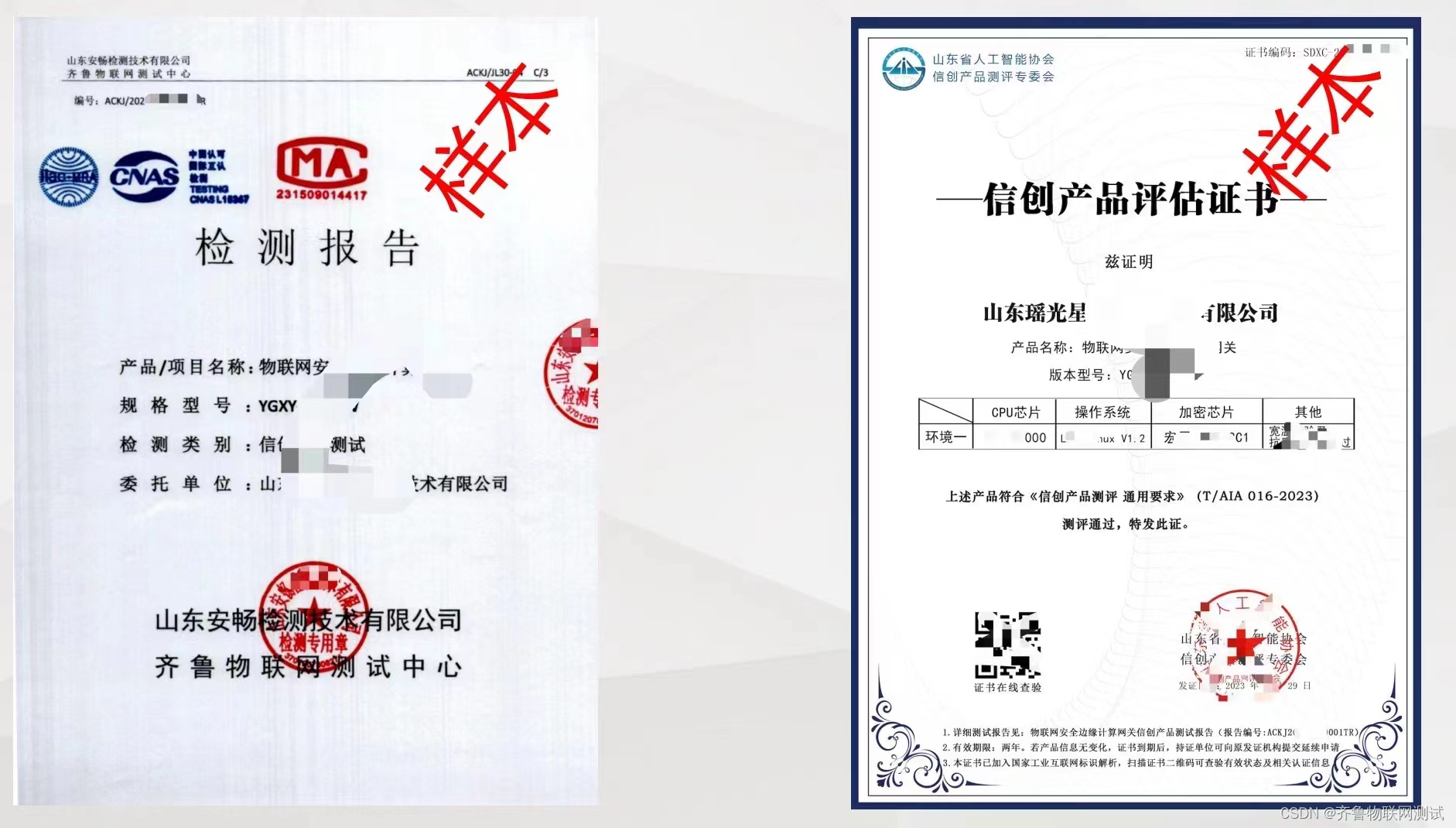
检测机构的双资质是什么?
CMA和CNAS是两种在检测、校准和认证领域具有权威性的资质。 CMA资质全称为“检验检测机构资质认定”(China Inspection Body and Laboratory Mandatory Approval)。它是根据《中华人民共和国计量法》等相关法规,由国家认证认可监督管理委员会…...
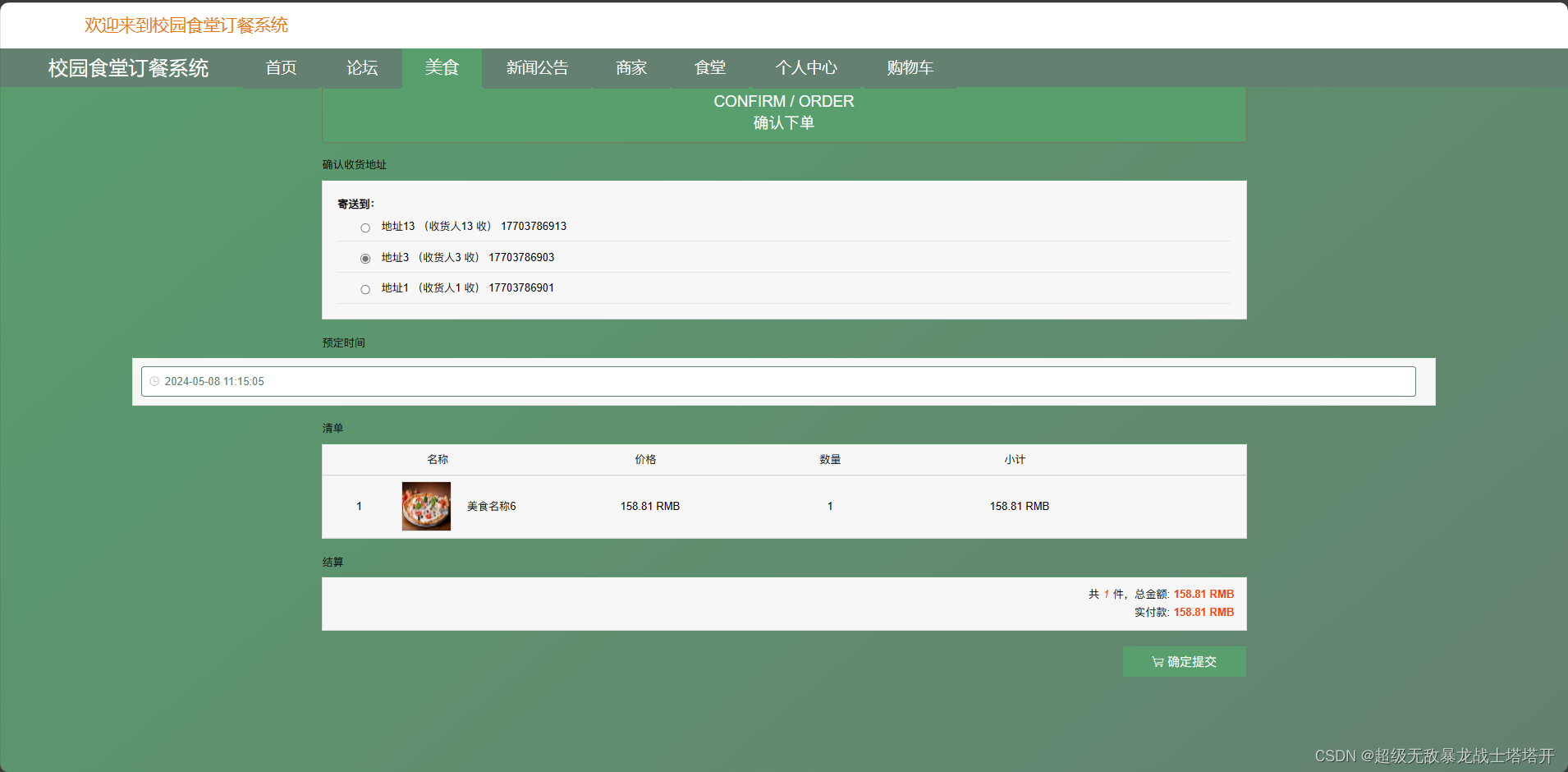
基于springboot的校园食堂订餐系统
文章目录 项目介绍主要功能截图:部分代码展示设计总结项目获取方式 🍅 作者主页:超级无敌暴龙战士塔塔开 🍅 简介:Java领域优质创作者🏆、 简历模板、学习资料、面试题库【关注我,都给你】 &…...

基于SpringBoot的高校推荐系统
项目介绍 当前,随着高等教育的不断普及,越来越多的学生选择考研究生来提高自身的学术水平和竞争力。然而,考研生在选择报考院校和专业时面临着众多的选择和信息不对称的问题。为了解决这些问题,一些网站和APP已经推出了相关的院校…...

了解 websocket
1. 概念 1、 websocket 是一种双向通行协议。实现了浏览器与服务器全双工通信,能更好的节省服务器资源和带宽并达到实时通讯的目的; 2、websocket连接成功后,只要连接不断开,通信就会一保持着; 3、要打开一个 WebS…...

C++中erase函数的用法
在C中,erase函数用于从容器中删除一个或一系列元素。它通常用于删除容器中的指定位置的元素或特定值的元素。 erase函数通常有两种用法: 删除指定位置的元素:erase(iterator position) 这种用法会删除容器中迭代器position指向的元素。 st…...

数字旅游以科技创新为核心竞争力:推动旅游服务的智能化、高效化,满足游客日益增长的旅游需求
一、引言 随着科技的飞速发展,数字旅游作为旅游业与信息技术结合的产物,正以其独特的魅力改变着传统旅游业的格局。科技创新作为数字旅游的核心竞争力,不仅推动了旅游服务的智能化、高效化,更满足了游客日益增长的旅游需求。本文…...

(MATLAB)安装指南
参考链接:MATLAB2019a安装教程(避坑版)...

社区智能奶柜:创业新机遇
社区智能奶柜:创业新机遇 在追求高质量生活的今天,健康食品成为大众焦点。社区智能奶柜适时登台,革新了居民获取新鲜牛奶的传统模式,为创业者开辟了一片蓝海市场。 一、新兴创业蓝海:牛奶随享站 日常膳食中…...

地盘紧固的关键技术——SunTorque智能扭矩系统
底盘紧固件是汽车底盘系统中不可或缺的一部分,它们负责连接和固定各个部件,确保车辆行驶的安全和稳定。底盘紧固件的开发涉及到多个环节和关键技术,下面SunTorque智能扭矩系统将详细介绍底盘紧固件开发流程和关键技术。 一、底盘紧固件开发的…...

Mybatis plus update PG json 类型 报错解决
Mybatis plus update PG json 类型 报错解决 1. 定义的PG数据库对象2. 自定义 JSON Handler3. update Wrapper4. update 报错信息4.1 No hstore extension installed.4.2 Error setting non null for parameter #1 with JdbcType null . Try setting a different JdbcType for …...

精通 Docker:简化开发、部署与安全保障
踏上 Docker 之旅,每一条命令都是高效与可靠的新境界。Docker 彻底改变了软件开发,为构建、部署和保障应用程序提供了前所未有的便利。从打造精益敏捷的镜像到编排复杂的微服务架构,Docker 让开发人员和运维人员都倍感轻松。让我们深入探索 D…...
)
KIMI的API使用:重点是他的API在使用的适合可以实时调用tool(外部联网等)
User: 如何获取kimi 的API Kimi: 要获取Kimi的API,您需要按照以下步骤操作: 注册账号:首先,您需要访问Kimi开放平台(platform.moonshot.cn/console)并注册一个账号。 获取API Key:登录后,在平台的“账户总览”部分查看平台赠送的免费额度。然后,点击“API Key 管理”…...

Android内核之Binder读写通信:binder_ioctl_write_read用法实例(七十)
简介: CSDN博客专家,专注Android/Linux系统,分享多mic语音方案、音视频、编解码等技术,与大家一起成长! 优质专栏:Audio工程师进阶系列【原创干货持续更新中……】🚀 优质专栏:多媒…...
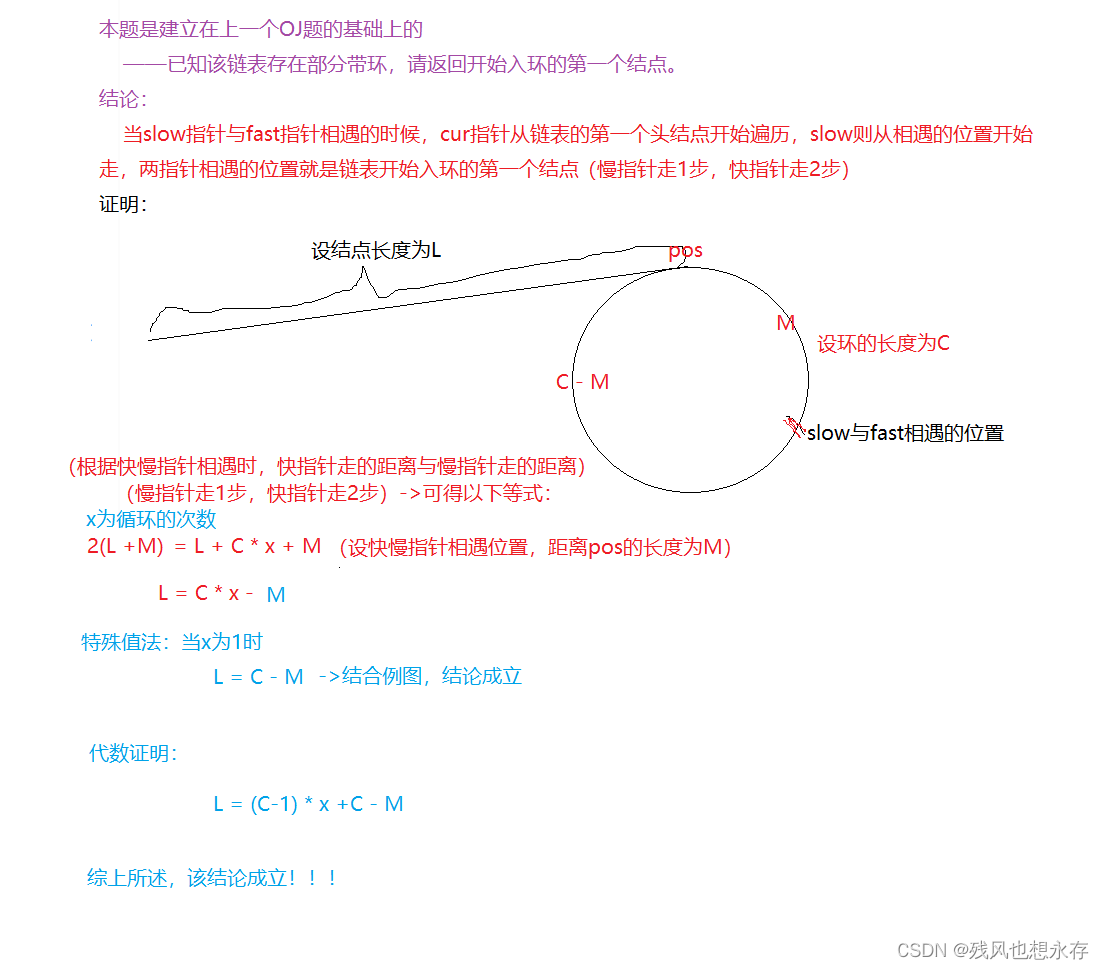
【C语言/数据结构】经典链表OJ习题~第二期——链中寻环
🎈🎈🎈欢迎采访小残风的博客主页:残风也想永存-CSDN博客🎈🎈🎈 🎈🎈🎈本人码云 链接:残风也想永存 (FSRMWK) - Gitee.com🎈…...

MySQL日志机制【undo log、redo log、binlog 】
前言 SQL执行流程图文分析:从连接到执行的全貌_一条 sql 执行的全流程?-CSDN博客文章浏览阅读1.1k次,点赞20次,收藏12次。本文探讨 MySQL 执行一条 SQL 查询语句的详细流程,从连接器开始,逐步介绍了查询缓存、解析 S…...

SSL通信、证书认证原理和失败原因
目录 SSL通信SSL认证原理SSL证书认证失败的原因分析 SSL通信 SSL通信指的是使用SSL(Secure Sockets Layer)协议进行的加密通讯。SSL是一种标准的安全技术,用于建立一个加密链接,确保从用户的浏览器到服务器之间的数据传输是私密和…...

【MsSQL】数据库基础 库的基本操作
目录 一,数据库基础 1,什么是数据库 2,主流的数据库 3,连接服务器 4,服务器,数据库,表关系 5,使用案例 二,库的操作 1,创建数据库 2,创建…...

51c自动驾驶~合集58
我自己的原文哦~ https://blog.51cto.com/whaosoft/13967107 #CCA-Attention 全局池化局部保留,CCA-Attention为LLM长文本建模带来突破性进展 琶洲实验室、华南理工大学联合推出关键上下文感知注意力机制(CCA-Attention),…...

在HarmonyOS ArkTS ArkUI-X 5.0及以上版本中,手势开发全攻略:
在 HarmonyOS 应用开发中,手势交互是连接用户与设备的核心纽带。ArkTS 框架提供了丰富的手势处理能力,既支持点击、长按、拖拽等基础单一手势的精细控制,也能通过多种绑定策略解决父子组件的手势竞争问题。本文将结合官方开发文档,…...

安宝特方案丨XRSOP人员作业标准化管理平台:AR智慧点检验收套件
在选煤厂、化工厂、钢铁厂等过程生产型企业,其生产设备的运行效率和非计划停机对工业制造效益有较大影响。 随着企业自动化和智能化建设的推进,需提前预防假检、错检、漏检,推动智慧生产运维系统数据的流动和现场赋能应用。同时,…...

Spring Boot面试题精选汇总
🤟致敬读者 🟩感谢阅读🟦笑口常开🟪生日快乐⬛早点睡觉 📘博主相关 🟧博主信息🟨博客首页🟫专栏推荐🟥活动信息 文章目录 Spring Boot面试题精选汇总⚙️ **一、核心概…...
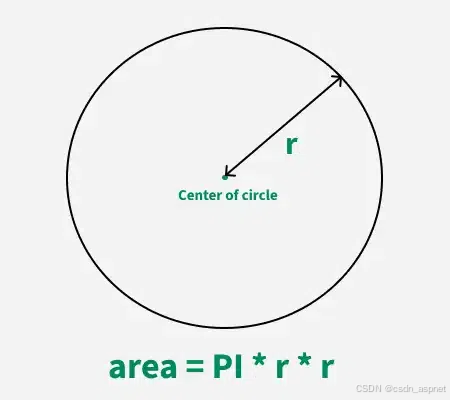
C# 求圆面积的程序(Program to find area of a circle)
给定半径r,求圆的面积。圆的面积应精确到小数点后5位。 例子: 输入:r 5 输出:78.53982 解释:由于面积 PI * r * r 3.14159265358979323846 * 5 * 5 78.53982,因为我们只保留小数点后 5 位数字。 输…...

基于Java Swing的电子通讯录设计与实现:附系统托盘功能代码详解
JAVASQL电子通讯录带系统托盘 一、系统概述 本电子通讯录系统采用Java Swing开发桌面应用,结合SQLite数据库实现联系人管理功能,并集成系统托盘功能提升用户体验。系统支持联系人的增删改查、分组管理、搜索过滤等功能,同时可以最小化到系统…...

Redis:现代应用开发的高效内存数据存储利器
一、Redis的起源与发展 Redis最初由意大利程序员Salvatore Sanfilippo在2009年开发,其初衷是为了满足他自己的一个项目需求,即需要一个高性能的键值存储系统来解决传统数据库在高并发场景下的性能瓶颈。随着项目的开源,Redis凭借其简单易用、…...
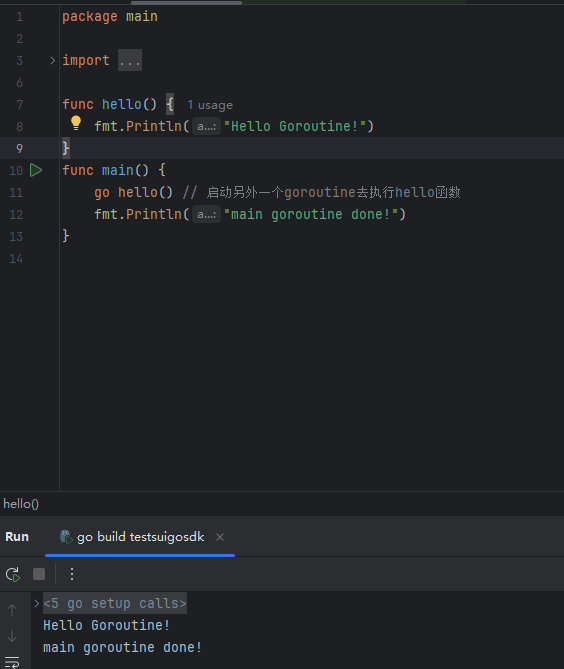
GO协程(Goroutine)问题总结
在使用Go语言来编写代码时,遇到的一些问题总结一下 [参考文档]:https://www.topgoer.com/%E5%B9%B6%E5%8F%91%E7%BC%96%E7%A8%8B/goroutine.html 1. main()函数默认的Goroutine 场景再现: 今天在看到这个教程的时候,在自己的电…...

DeepSeek越强,Kimi越慌?
被DeepSeek吊打的Kimi,还有多少人在用? 去年,月之暗面创始人杨植麟别提有多风光了。90后清华学霸,国产大模型六小虎之一,手握十几亿美金的融资。旗下的AI助手Kimi烧钱如流水,单月光是投流就花费2个亿。 疯…...

云原生安全实战:API网关Envoy的鉴权与限流详解
🔥「炎码工坊」技术弹药已装填! 点击关注 → 解锁工业级干货【工具实测|项目避坑|源码燃烧指南】 一、基础概念 1. API网关 作为微服务架构的统一入口,负责路由转发、安全控制、流量管理等核心功能。 2. Envoy 由Lyft开源的高性能云原生…...
